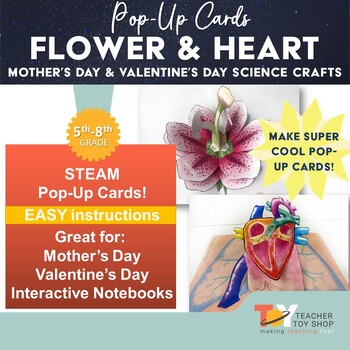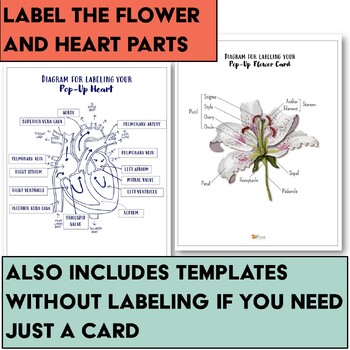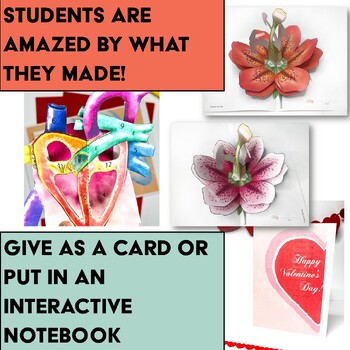Mother's Day and Valentine's Day Science Crafts - Flower and Heart Cards
- Zip
- Google Apps™
- Easel Activity
- Easel Assessment

Products in this Bundle (2)
Also included in
- All of Teacher Toy Shop's Life Science resources in one place! Some biology topics included: cells, ecosystems, human body systems and organs, flowers, reproduction, human eye, and more. Includes NGSS aligned lessons, experiments using the Scientific Method, and more.Purchase this bundle for a low-pPrice $49.99Original Price $80.66Save $30.67
Description
Looking for a SPECTACULAR science project for Mother's Day or Valentine's Day? These will not disappoint! Your students will make a flower popup card and a heart popup card and learn the parts of a flower and parts of the human heart.
You can have students label the flower parts or the heart anatomy or use the included templates that don't call for labels. Diagrams are included as well as easy, step-by-step instructions and links to free videos that show how to make the cards. Each card can be completed in a single class period.
Templates are provided in color or b&w if students prefer to color their own.
Send these home as fantastic cards or put them into a (very) interactive notebook.
You Might Also Like...
- Parts of a Flower Dissection Science Lab
- Parts of a Flower and Plant Reproduction Activities
- Parts of a Flower and Plant Reproduction Presentation | PowerPoint SLIDES
⚠️ BUNDLE & SAVE! ⚠️ Download the Life Science and Activities Bundleand save on everything you need to teach life science and biology!
✪ Don't forget to follow Teacher Toy Shop to be the first to know about new products, sales, and freebies!






